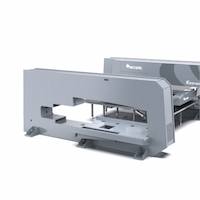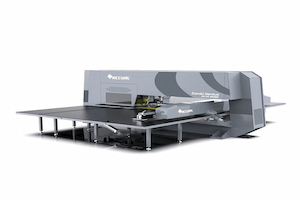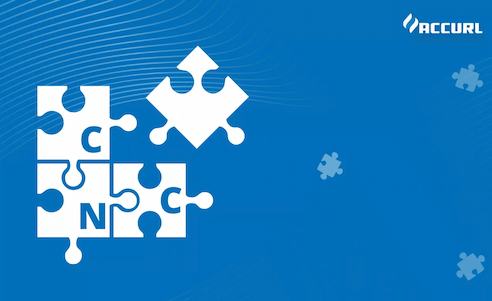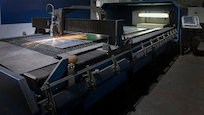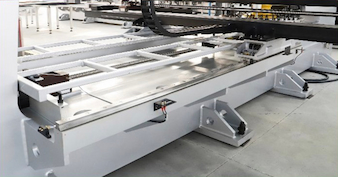Why is the CNC turret punch press the intelligent heart of modern sheet metal processing?
May 29, 2025
I. Core Technology: The unique design principle of the turret punch press
The core of a CNC turret punch press lies in its turret structure - a rotating tool magazine that can accommodate dozens of sets of molds. Unlike traditional single-punch presses, the turret design enables automatic die switching through program control, allowing the equipment to complete multiple processes such as punching, forming, and stretching in a single clamping.
The turret is usually divided into two layers, with the upper die installed on the upper layer and the lower die fixed on the lower layer. Through precise synchronous rotation and positioning, the perfect alignment of the dies at the moment of stamping is ensured.
The precision servo drive system is the nerve center of modern turret punch presses. It controls the high-speed and precise positioning of the sheet in the X-Y plane, the Z-axis movement trajectory of the punch, and the rotation Angle of the turret. The high-dynamic servo motor, in combination with the linear guide rail, enables the metal sheet to move at a speed exceeding 100 meters per minute, while maintaining the positioning accuracy within ±0.1mm.
This combination of speed and precision is beyond the reach of manual operation or traditional machinery.
Safety design is another major highlight of the turret punch press. Modern equipment adopts the "human-machine separation" principle - when the equipment is in operation, the operator stays away from the working area, and the equipment automatically stops when the operator approaches. In combination with the light curtain protection and the two-hand start button, the equipment achieves the intrinsic safety of "human-powered machine stops and motorized human-powered machine stops", completely eliminating the risk of hand injury caused by traditional punch presses.
Ii. Technological Innovation: Intelligent control systems empower efficient production
The innovation of touch interaction interfaces has greatly enhanced operational efficiency. The new generation of turret punch press adopts a 21.5-inch FHD full high-definition vertical screen and supports 10-point capacitive touch control. Operators can operate smoothly even when wearing gloves.
The 178° full-view screen ensures that the processing status can be clearly observed from all angles. The closed rigid chassis design effectively resists the ubiquitous dust and oil stains in the metal processing environment, ensuring the long-term stable operation of the electronic system.
The introduction of adaptive control technology has endowed the turret punch press with the ability to "think". Similar to the ACM adaptive monitoring system of OMAT Company, it can collect the spindle load data in real time and dynamically adjust the processing parameters. When abnormal vibration or sudden load changes are detected, the system can automatically slow down or shut down to avoid costly mold damage.
Practical application data shows that this technology can save approximately 38% of the time for contour processing, 34% for slot hole processing, and extend the mold life by up to 40%.
The modular programming platform has significantly lowered the technical threshold. Modern turret press control systems offer a graphical programming interface. Operators only need to import CAD drawings, and the system can automatically generate and optimize the stamping path. For complex and irregular-shaped holes, the software will automatically decompose the continuous contour into a series of small line segments and achieve this through high-speed step punching.
This "what you see is what you get" programming approach enables operators without a mechanical background to quickly master the use of the equipment, providing an efficient employment channel for new immigrants and technology transition personnel.
Iii. Automation Integration: Building an unmanned sheet metal factory
The robot collaborative system has greatly enhanced the capabilities of the turret punch press. Through an integrated solution similar to Siemens' Sinumerik Run My Robot, industrial robots can be directly controlled by the CNC system to achieve full-process automation of automatic sheet material loading, finished product stacking and mold replacement.
This deep integration not only reduces the hardware configuration requirements, but also optimizes the robot's motion trajectory accuracy through a unified data flow, making the entire working unit coordinated as one.
The combination of the automatic mold changing system (ATC) and the automatic pallet exchange system (APC) has created a continuous production environment. When the equipment is processing the current workpiece, the robot has already clamped the next sheet in the preparation area. When special molds are required, the turret automatically rotates to the target workstation, and the entire process only takes 2 to 3 seconds.
This seamless connection has raised the equipment utilization rate from the traditional 50-60% to over 85%, truly achieving a continuous production mode of "factory with lights off".
Iv. Industry Application and Economic Value: The Core Carrier of sheet metal processing
The application scope of CNC turret punch presses is astonishing: from 1mm thick electronic chassis panels to 12mm thick protective plates for construction machinery, from stainless steel kitchen equipment to aluminum alloy elevator decorations, its processing capacity covers almost all metal plates that require holes and shapes.
Factories equipped with turret punch presses are often simultaneously configured with CNC laser cutting machines and CNC bending machines, forming a complete sheet metal processing production line.
The salary level in the industry confirms its technical value. In North American manufacturing, the starting salary for technicians operating fully automatic turret punch presses can reach $18 per hour, and for junior positions, it is no less than $15 per hour.
The salaries offered by domestic high-end sheet metal enterprises for skilled turret punch press programming operators are also significantly higher than those for ordinary positions, which reflects the market's urgent demand for compound sheet metal technical talents.
V. Future Trends: The Integration of Digitalization and Flexibility
Digital twin technology is transforming the operation mode of turret punch presses. By fully simulating the stamping process in a virtual environment, engineers can optimize die selection, sheet metal layout and stamping sequence before actual production. Systems such as hyperMILL® VIRTUAL Machining can generate digital twins of real machine tools. Collision checking and motion optimization are completed in the virtual space to ensure the success of actual processing in one attempt.
Users can upgrade from small format to large format and expand from thin plate processing to thick plate processing without replacing the entire machine, significantly enhancing the return on investment.
Edge computing and the Internet of Things endow devices with predictive maintenance capabilities. By real-time monitoring of the main motor current, the positioning accuracy of the turret and the impact waveform of the punch, the system can provide early warnings of potential faults such as guide rail wear and mold fatigue. This shift from "regular maintenance" to "on-demand maintenance" has elevated the availability of equipment to a new level.
If you have more ideas, please contact us!
Tel: +86 -18855551088
Email: Info@Accurl.com
Whatsapp/Mobile: +86 -18855551088
